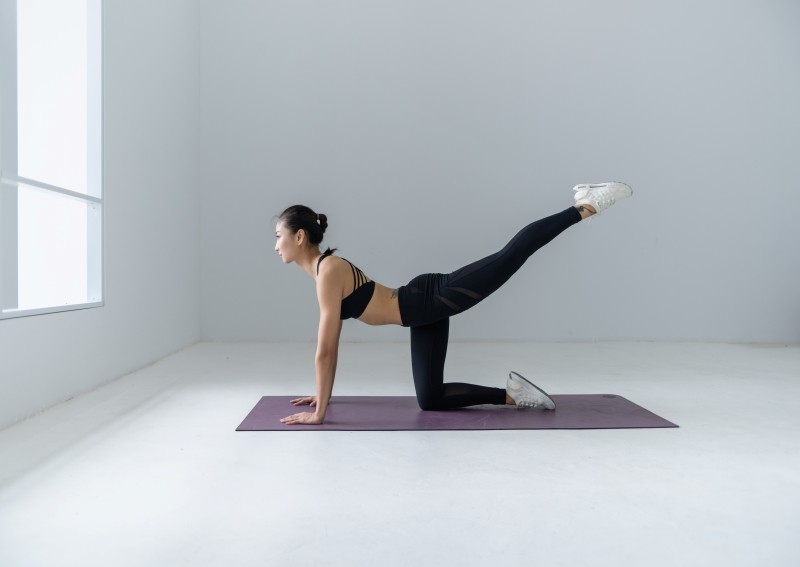What type of yoga is best for you?

Know this: Yoga is not a one-sized-fits-all practice of the mind and body.
With thousands of years of history in ancient Indian philosophy, yoga uses breathing techniques, meditation, stretching and exercises to train the body and mind to become more mindful of its own nature.
However, there are so many yoga styles – from physically demanding to easy and relaxing – that cater to different types of yogis.
Want to dip your toes into the peaceful waters of yoga? Read on for a quick guide on what you need to know to pick the right practice for you.
Yoga was developed as a way to achieve harmony in the body, and many studies have confirmed its advantages. Incorporating it into your routine can only bring about good things. Here are some of them, according to folks at PURE Yoga in Singapore:

“Hatha is known as “flow” yoga. The flow varies according to the practitioner’s personal level of experience,” explains Imron, a resident yoga instructor at The Sanchaya resort on Bintan Island.
Under Hatha, there’s gentle flow, which is relaxed, and there is the Vinyasa flow, which involves stringing postures together so that you move from one to another seamlessly. This gives the feeling that the body is moving like air.
There is also Astanga – a so-called “power” flow, because you are taken through a set sequence where you have to take a minimum of five long breaths for each asana (pose).
While staying put requires more energy and power, this “is a really good practice to shape the body, strengthen the muscles and to lose weight,” says Imron.
Yin yoga is a slow-paced style with postures that promote myofascial release. What does that mean? A myofascial release is a deep stretch and therapeutic effect that activates the meridian lines connected to your organs.
This passive practice involves variations of seated and supine poses typically held for long periods of time. “If you are a really active person or do physical work, this is an ideal type of yoga for you,” Imron suggests.

Yoga Nidra, also known as yogic sleep, is a meditative and conscious relaxation practice where you lie in savasana (corpse pose) as you are brought through several layers of yourself. It’s an exercise intended to induce total physical, mental and emotional relaxation.
If you are looking to stretch their body with moderate physical effort and wants to increase your body-breath synchronicity, try Vinyasa. Vinyasa poses are held for short periods of time, and an emphasis is placed on the rhythm of breathing.

Ashtanga is for those who are more active and want to feel the effects of a workout, as it is designed to make you sweat. Imron notes, Ashtanga combines power and flexibility with movement, body “locks” that contract muscles (bandhas) and breath to produce an energetic and detoxifying practice.
There is also Bikram yoga, a hot vinyasa system that features the same 26 postures and two breathing exercises in the same order for 90 mins. Studios who offer classes on Bikram yoga must heat the rooms to 105 degrees with 40 percent humidity to make the workout effective.
For active people who work outdoors: Yin or Hatha yoga with gentle flow to release tension and relax your body.
For office workers who lead a more sedentary life: A movement/flow practice to stabilise your body, such as Vinyasa, would be beneficial. This is because it has a variety of postures, so it helps to develop a more balanced body.
Also, it prevents repetitive motion injuries that may happen when you are engaging in repetitive motions every day (e.g., looking at the computer).
[[nid:500221]]
For those who are feeling overwhelmed: Yoga Nidra meditation can help you connect deeply with yourself, bring joy and relaxation and reduce stress.
For worn-out parents: Gentle yoga classes such as Hatha or Vinyasa with longer-held poses that stretch the body and mind are best. The deep stretches release tension in the muscles and fascia. The gentle pace of class will then allow the focus to be on deep breathing, which promotes healing and restoration.
For busy bees: Try Yin yoga. This type of yoga combines an invigorating strengthening practice with long-held, deep softening stretches to balance the body and mind. It will also help to facilitate the release of unnecessary tension for body and mind, promoting relaxation and joy.
For those who love a challenge: Go for Bikram yoga. This practise requires discipline as you work through the routine in a super hot and humid room. But it’s worth it! Advocates say the heat provides a better cardiovascular workout and burns more calories.
Don’t worry, you don’t have be able to twist your body into a pretzel to get started on yoga. Just keep an open mind and try out various practices to see what resonates with them. Take your time to ease into things and see which ones are your favourite.
That said, a Hatha-based, alignment practice helps people learn the basics of the physical practice. Here, you will learn the shapes of the poses, and how to breathe and move from one pose to the next. It’s the most gentle and is most accessible to those with less experience.
Just remember to pay attention to your breathing – ensure you are breathing deeply through their nostrils and into their belly – and work at your own pace. If you can’t achieve a particular pose or a particular duration, take it slow. Most positions can be modified or altered to suit your needs as well. So communicate with your yoga instructor for a better experience.
This article was first published in The Finder.